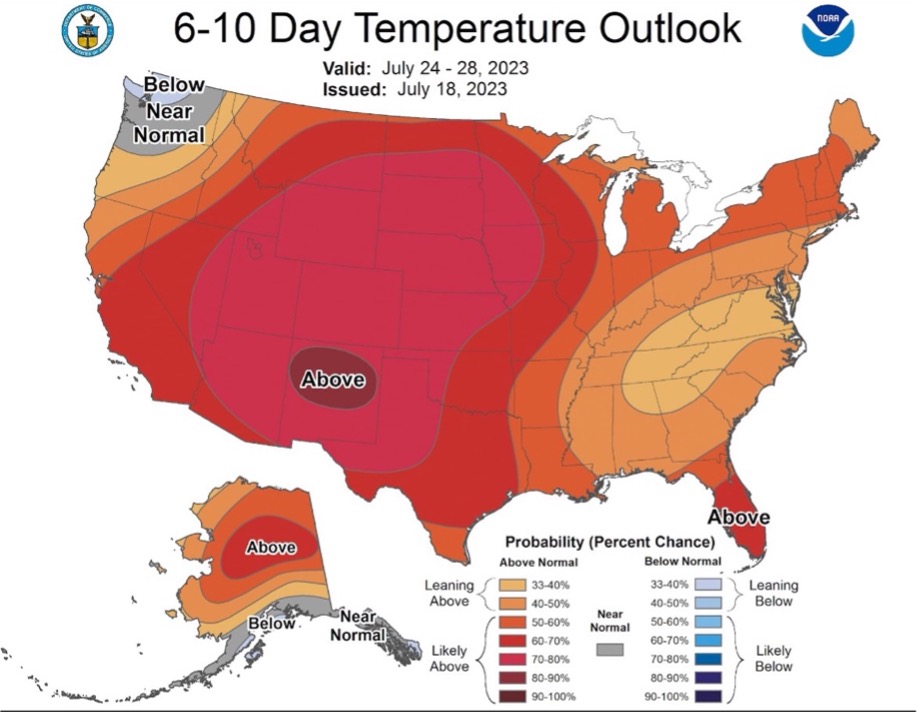Written by: Rashawn Khamari Merchant

Rashawn Merchant/Earth Shiners
On Monday, July 3rd, the average global temperature reached 62 degrees Fahrenheit, the highest in the U.S. National Centers for Data Prediction since 1979. On Tuesday, it reached 63. These records are a part of the growing trend of rising temperatures worldwide. Scientists attribute the rapid change to an onslaught of heat waves and dryness in various regions.
While the Centers for Data Predictions records only date back to the mid-20th century, researchers are confident that we are experiencing the warmest the Earth has been in several thousand years.
Scientists have measured carbon and temperature data from frozen ice cores in the arctic poles for decades. A closely related trend indicates that as carbon amounts in the atmosphere have increased, so has the average temperature on Earth.

National Weather Service
There are estimations that July’s temperatures have broken records dating back 100,000 years. Data may continue to shatter as El Nino events occur. El Nino is a natural climate pattern resulting in unusual Pacific Ocean warming. According to the National Oceanic and Atmospheric Administration, the pattern can contribute to rising temperatures.

Rashawn Merchant/Earth Shiners
In multiple places around the globe, there have been simultaneous heat waves. In Texas and the southern United States, temperatures have been in the high 90s and low 100s for most of the summer. Extreme heat mixed with humidity can be dangerous, as people in Mexico have died from heat-related illnesses.

Rashawn Merchant/Earth Shiners
On Thursday, July 13th, the National Weather Service alerted 113 million Americans to heat warnings. “The long-term outlook through the weekend and into next week is for an increasingly significant heat wave,” said the service.
Thanks for reading!
Copyright Earth Shiners Creative LLC 2023
Earthshiners@earthshinersmagazine.com
Leave a Reply